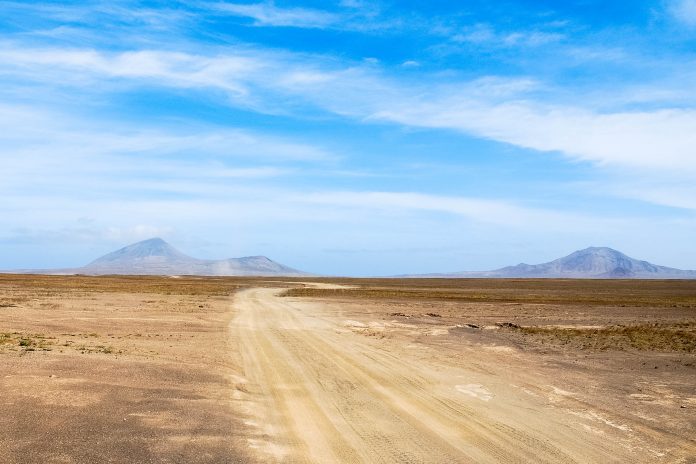Mit dem einzigen internationalen Flughafen das Eingangstor auf die Kap Verden präsentiert sich die ehemalige Salzinsel Sal auf den ersten Blick trocken und öd. Doch auf den zweiten Blick lassen sich traumhafte Strände mit ganzjähriger Badetemperatur im Atlantik, heilsame Salzseen und luxuriöse Hotelanlagen entdecken.
Die langgestreckte Insel Sal ist die östlichste Insel der Kap Verden und durch den internationalen Flughafen die erste Insel, die ausländische Gäste zu Gesicht bekommen. Sie präsentiert sich auf den ersten Blick flach, trocken, wüstenartig, ohne viel Grün, ohne viel Schatten – dafür mit viel, viel Sonne und fantastischen Stränden, vor allem in der Touristenhochburg Santa Maria.
Inhaltsverzeichnis
BILDER: Sal – Tor zu den Kap Verden
Fotogalerie: Sal – Tor zu den Kap Verden
Durch den einzigen internationalen Flughafen der Kap Verden floriert auch der Tourismus auf dem 30km langen „goldenen Splitter im Ozean“. Auf Sal leben mittlerweile 20.000 Menschen, von denen nur etwa 10% über 40 Jahre alt sind. Taucher, Kite- und Windsurfer und Sonnenanbeter fühlen sich auf Sal pudelwohl, alle anderen fliegen meist rasch weiter zu den reizvolleren Inseln der Kap Verden.
Klima auf Sal – Sonne, Sonne, Sonne
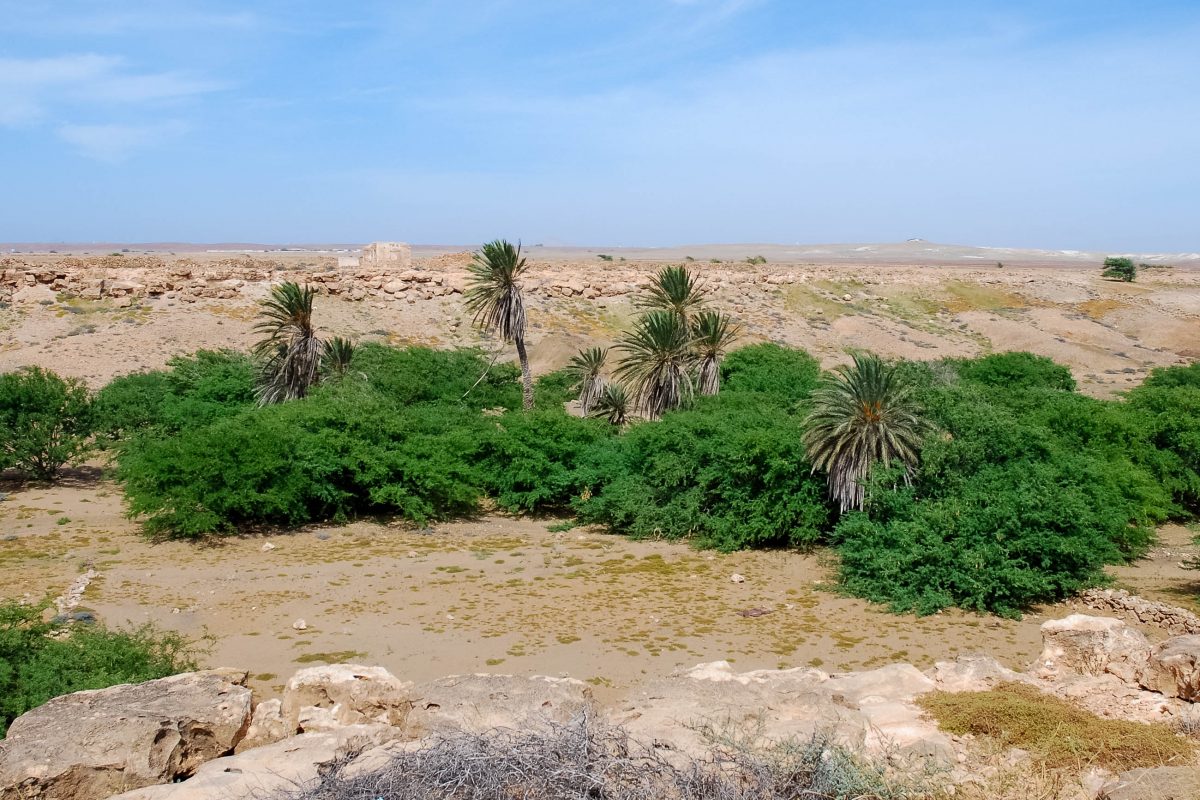
Sal wird vom Wetterfrosch mit durchschnittlich 330 Sonnentagen im Jahr verwöhnt. Auf Sal gibt es keine Berge, die eine Wolkenbildung ermöglichen würden. Der Monte Grande im Norden von Sal ist mit seinen 405 Metern als höchste Erhebung der Insel eher ein Hügelchen als ein „großer Berg“.
Wenn es auf Sal regnet, dann am ehesten zwischen August und Oktober. Doch auch in dieser „Regenzeit“ reicht die Nässe von oben nicht aus, um auf Sal so etwas wie Vegetation zu ermöglichen. Durchschnittlich regnet es an 10 Tagen pro Jahr (in London sind es 145) und im Mai hat es seit Beginn der Aufzeichnung noch gar nie geregnet.
Es gibt auf Sal keine Berge, keine Täler oder Schluchten, keine Kulturdenkmäler oder Nationalparks. Die Hauptaktivitäten auf Sal haben mit Hitze und Meer zu tun und beschränken sich auf Faulenzen im Sand, Wassersport und endlose Strandspaziergänge.
Santa Maria – Sals schönster Strand
Die Stadt Santa Maria liegt an der Südküste von Sal etwa 20 Kilometer von der Inselhauptstadt Espargos entfernt. Sie ist die größte Stadt und das touristische Zentrum der gesamten Insel und zählt zu unseren Top 10 Sehenswürdigkeiten der Kap Verden.
Nur etwa eine viertel Stunde mit dem Auto vom Flughafen entfernt präsentiert sich Santa Maria als traumhafte – und ausschließliche – Symbiose aus Himmel, Sonne, Strand und Meer. Kein einziger Baum trübt das Farbenspiel aus himmlischem Blau und sandigem Weiß.
BILDER: Santa Maria auf der Insel Sal, Kap Verde
Fotogalerie: Sal – Santa Maria
Das Herz des Tourismus auf Sal

Anfang des 19. Jahrhunderts beherbergte Santa Maria die Arbeiter auf den Salzfeldern der Region, nach dem Niedergang der Salzindustrie wurde es zum Herz des Tourismus auf Sal. An der sonnenverwöhnten Südküste von Sal befinden sich die größten Hotelresorts der gesamten Kap Verden, hinter Glaswänden und dichten Hecken vor dem allgegenwärtigen Wind geschützt.
Tagsüber, wenn die Sonne vom Himmel brennt, ist Santa Maria so gut wie ausgestorben. In der mitttäglichen Siesta ist kaum jemand auf der Straße anzutreffen. Erst gegen Nachmittag wird es erträglich und je näher die Sonne Richtung Horizont sinkt, desto mehr Souvenirshops, Snackrestaurants, Bars, Pensionen und Internet-Cafés öffnen ihre Tore.
Vom Salzabbau zum Tourismus

Vom ehemaligen Salzabbau heute noch übrig und mittlerweile so etwas wie das Wahrzeichen von Santa Maria ist das Wäghaus am alten Hafen. Es duckt sich zwischen kleine Restaurants, schmucke Läden und pastellfarbene Häuschen.
Hier wurde früher das Salz aus Pedra de Lume abgewogen, bevor es auf seine lange Reise über das Meer geschickt wurde. Heute findet man im Waagehaus Souvenirgeschäfte. Am Hafen kann man außerdem die Fischer beobachten, die ihren Fang an Land bringen und gleich vor Ort verarbeiten.
In den ausgezeichneten Restaurants in Santa Maria lässt sich exzellenter Fisch direkt aus dem Meer speisen. Als Digestif empfiehlt es sich in einer der zahlreichen Bars und Discos der Hotelanlagen einen kapverdischer Caipirinha zu genießen (genau wie das brasilianische Original nur mit einheimischem Grog statt Zuckerrohrschnaps).
Traumhafter Strand von Santa Maria
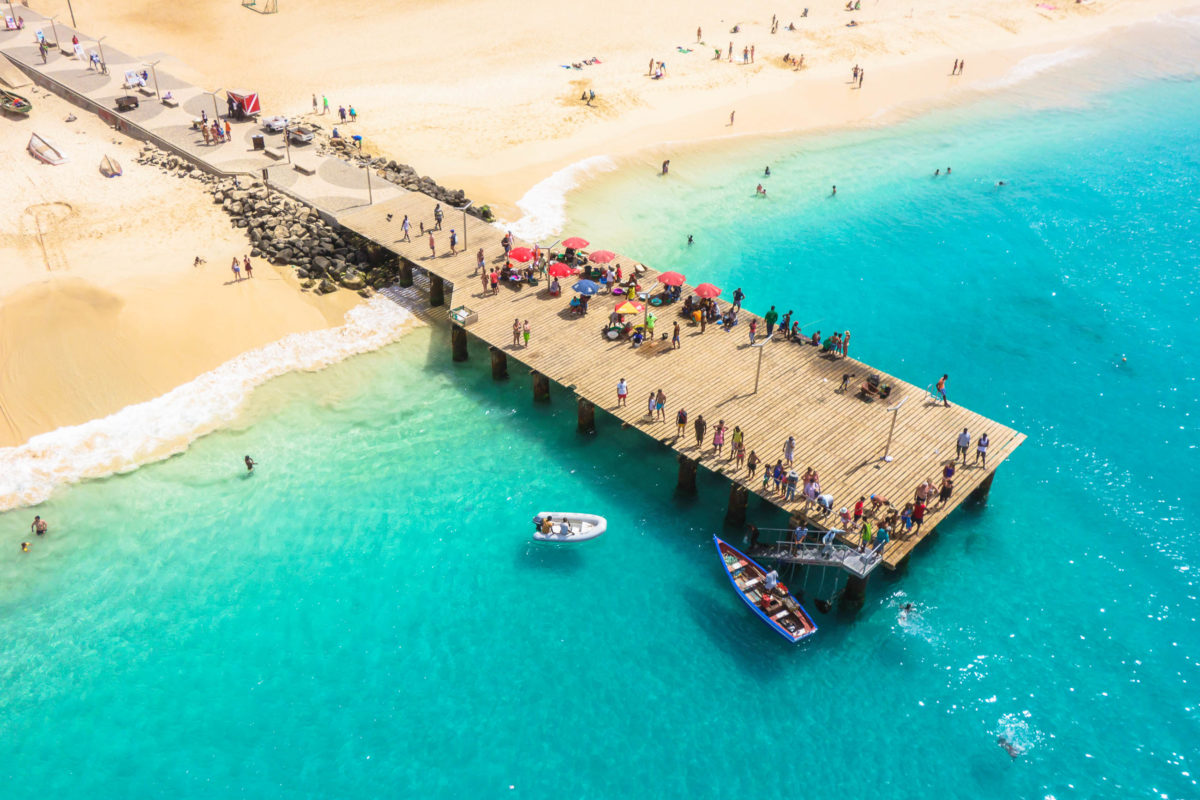
Hauptattraktion von Santa Maria ist der traumhafte, feinsandige Strand, der sich auf einer Strecke von 8km um Sals Südspitze schlängelt. Neben Baden und Schwimmen sind am Strand von Santa Maria auch Bootsausflüge und Wassersport möglich. Die Surf- und Tauchschulen reichen fast bis ans Wasser.
BILDER: Die schönsten Strände auf Sal, Kap Verde
Am Strand von Santa Maria gibt es luxuriöse Hotelanlagen, Animationen am Abend, Bootsverleihe, Anbieter für vielfältigen Wassersport, Reitmöglichkeiten und vieles mehr – ein Urlaubsstrand, wie er in der Karibik nicht besser sein könnte. Hier ist das Baden auch noch relativ sicher. Aber Achtung! Je weiter man sich von Santa Maria in Richtung Norden entfernt, desto heimtückischer und gefährlicher werden die Strömungen.
Tipp: Der Strand von Santa Maria ist vor den großen Hotels oft relativ voll. Einige Kilometer abseits hingegen präsentiert er sich einsam wie immer – dafür aber auch ohne jegliche Infrastruktur.
Das Nachtleben müssen die Touristen allerdings selbst mitbringen. Außerhalb der Hotelbars ist nicht viel los. Wer dennoch etwas mehr von der Insel sehen möchte, kann die faszinierenden Lichtspiegelungen des Olho Azul („Blaues Auge“) in Buracona oder die alten Salinen in Pedra de Lume besichtigen.
Schnorcheln und Tauchen auf Sal

Taucher sind am besten an der West- und Nordküste von Sal etwa auf Höhe von Espargos bedient. Hier gibt es zwar keine Sandstrände, doch an der zerklüfteten Steinküste tummelt sich eine spektakuläre Vielfalt an bunten Meeresbewohnern. Die Tauchstationen in Santa Maria kennen die besten Tauchspots der Insel und steuern diese gezielt an.
Etwa 5km nördlich von Palmeira liegt Buracona, ein natürlicher Pool, in dem ohne Gefahr schwimmen und tauchen kann. Hier begeistern fantastische Korallenriffe und spektakuläre Unterwasser-Höhlen, wie zum Beispiel die Olho Azul („Blaues Auge“). Zwischen 11 und 13 Uhr bricht sich das Sonnenlicht in dem ovalen Loch in der Felsdecke und lässt es in intensiven Blau- und Türkistönen leuchten.
Tipp: Es gibt auf Sal keine Bäume und daher auch keinerlei Schatten. Auch der stärkste Lichtschutzfaktor ist hier nicht übertrieben und zu Mittag flüchtet man am besten ins Hotel. Wenn der Passatwind am stärksten weht, ist man ohnehin an den hinter Hecken und Glaswänden geschützten Hotelpools besser aufgehoben.
Sole-Bäder in Pedra de Lume

Pedra de Lume („feuriger Stein“) liegt an der Ostküste von Sal und ist neben Sals traumhaften Stränden die zweite Hauptattraktion der Wüsteninsel der Kap Verden. Hier sickert Salzwasser in einen erloschenen Unterwasser-Vulkan, den Pedra de Lume, in dessen Krater durch die Verdunstung in der flirrenden Hitze eine riesige Salzpfanne entstanden ist.
Salzgewinnung auf Pedra de Lume
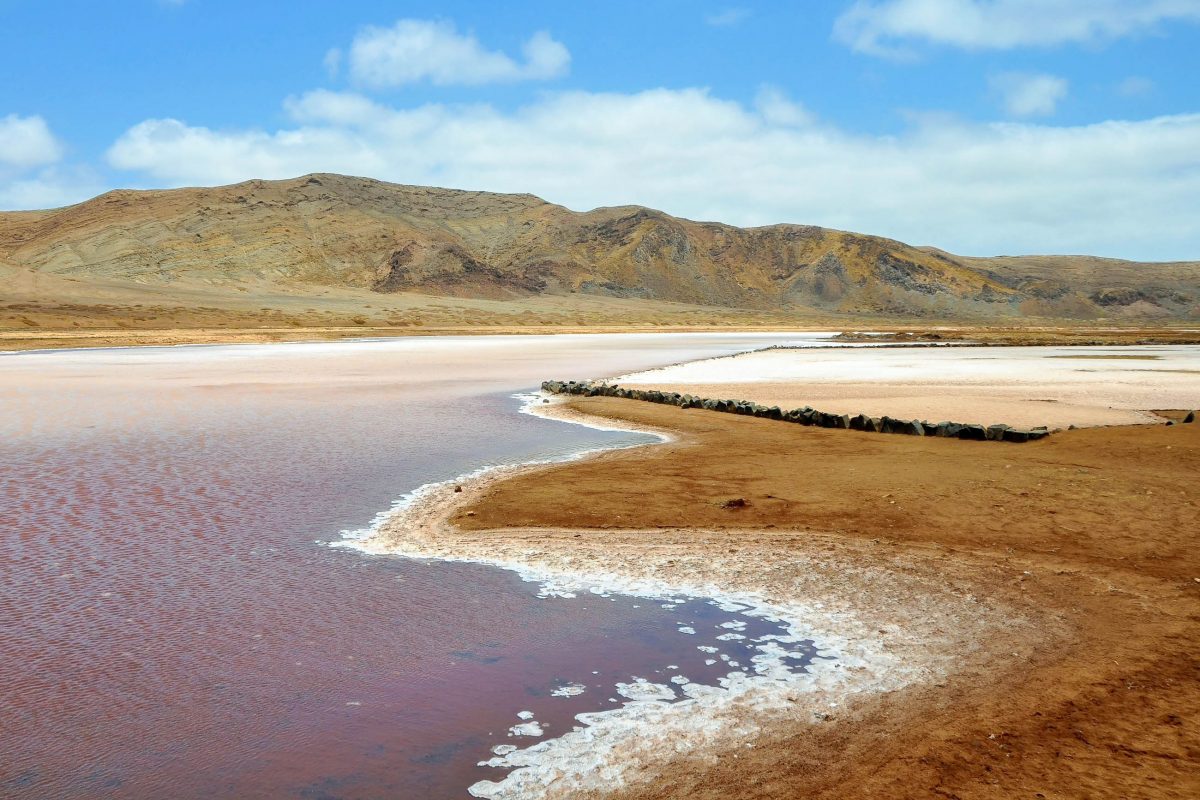
In diesem Einsturzkrater wurde bis in die Mitte des 20. Jahrhunderts Salz abgebaut. Eine einsame Kirche, die hölzernen Baracken und die verlassenen Maschinen formen eine einzigartige bizarre Szenerie unter der gleißenden Sonne über Sal.
Zu Anfang der Salzförderung mussten die Packtiere mit den schweren Salzsäcken noch über den Kraterrand klettern, erst 1804 wurde ein Tunnel durch die Kraterwand gegraben. 1922 wurden die Packtiere von Pedra de Lume durch eine revolutionäre Seilbahn abgelöst, die 25 Tonnen Salz pro Stunde transportieren. Zur Blütezeit des Salzhandels waren in Pedra de Lume mehrere hundert Arbeiter beschäftigt.
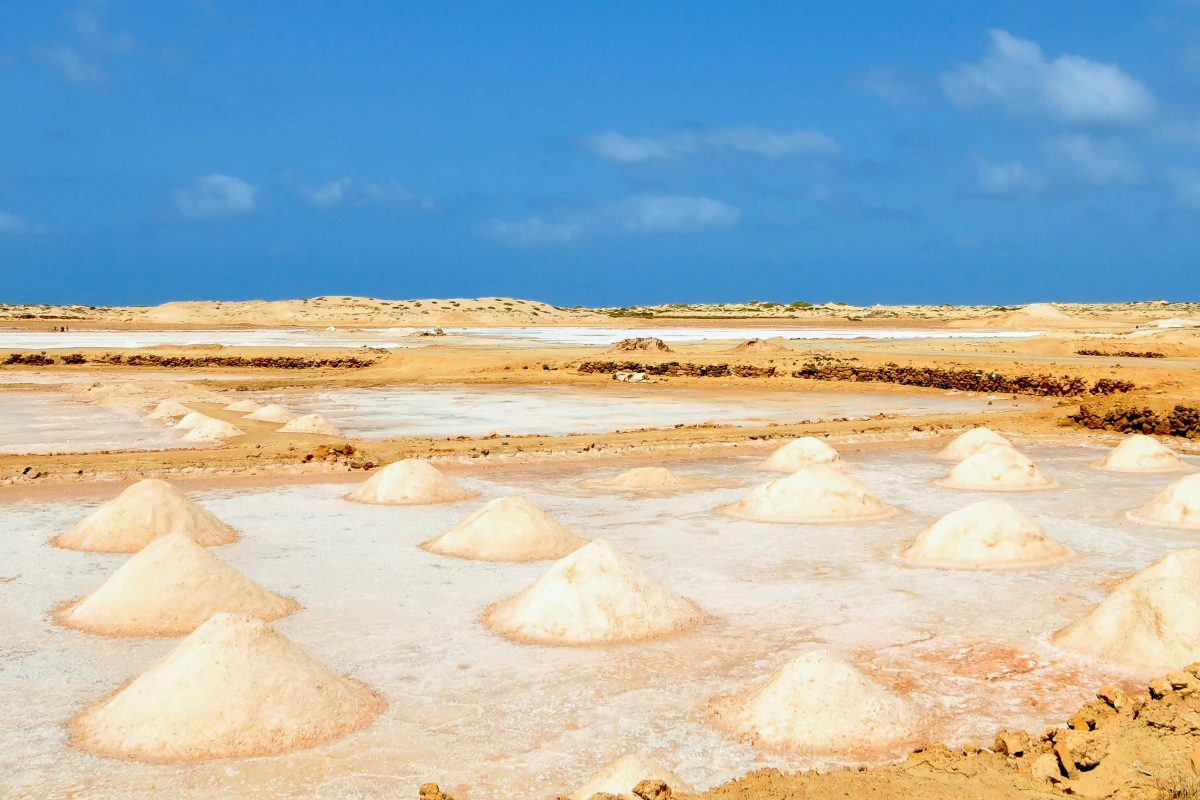
Eine Piste führt immer noch bis zu dem Tunnel, der ins Innere des Kraters führt, seit 1984 werden die Salzfelder auf Sal jedoch nur mehr für den Eigenbedarf genutzt und Pedra de Lume ist kaum noch bewohnt. Neben der atemberaubenden Kulisse können Besucher in der Salzpfanne ein Bad wie im Toten Meer genießen oder ein mineralreiches Schlammbad nehmen. Eine anschließende Dusche ist übrigens vor Ort möglich.
Geschichte des Salzabbaus auf Sal
Wie auch die restlichen Inseln der Kap Verden wurde Sal im Jahr 1460 von den Portugiesen entdeckt und in Beschlag genommen. Ursprünglich hieß die Insel schlicht und einfach „Ilha Lhana“ („flache Insel“).
Seinen heutigen Namen erhielt Sal („Salz“) von den reichen Salzvorkommen um Pedro de Lume, welches in großem Stil gefördert und exportiert wurde. Anfang des 19. Jahrhunderts wurden pro Jahr 30.000 Tonnen Salz abgebaut, die Sal zu einer wohlhabenden Insel machten, deren Bevölkerung stetig wuchs.
Bis zur Mitte des 20. Jahrhunderts ging der Salz-Boom weiter, danach wurden die Salzwiesen aufgegeben und die meisten Maschinen dem Rost überlassen.
Sals Hauptstadt Espargos
Genau in der Mitte von Sal liegt seine Hauptstadt Espargos, 3km nördlich des Flughafens. Espargos entstand im Jahr 1939, als die Italiener unter Benito Mussolini den Bau des Flughafens auf Sal starteten. Für die italienischen Flieger Richtung Südamerika war Sal der perfekte Zwischenstopp zum Auftanken.
Auch die südafrikanischen Fluglinien, die während der Apartheid in vielen afrikanischen Ländern nicht landen durften, nutzten Sal als Stop-over. Für die Flugzeug-Crews wurden in Espargos und Santa Maria die ersten Hotels gebaut und schließlich wurde Sal vor allem durch seine wunderschönen Strände auch für den Tourismus entdeckt.
Seinen Namen „Spargel“ hat die Stadt vom wilden Spargel, der angeblich einst dort wuchs. Damals bestand Espargos nur aus Quartieren für die Flughafenarbeiter, heute zählt Sals Hauptstadt an die 8.000 Einwohner und ist Sitz des Bürgermeisters, der Stadtbibliothek und des Gesundheitszentrums.
Für Besucher hat Espargos wenig zu bieten, außer Geschäfte aller Art, die überwiegend afrikanisches Handwerk verkaufen und die praktischen Dinge des Reiselebens, wie die Post, eine Bank, Bars, Internetcafés und auch ein Hotel und einige Pensionen. Touristisch geht anderswo – auf den Stränden und vor allem in Santa Maria – die Post ab.
Technik und Hafenleben in Palmeira
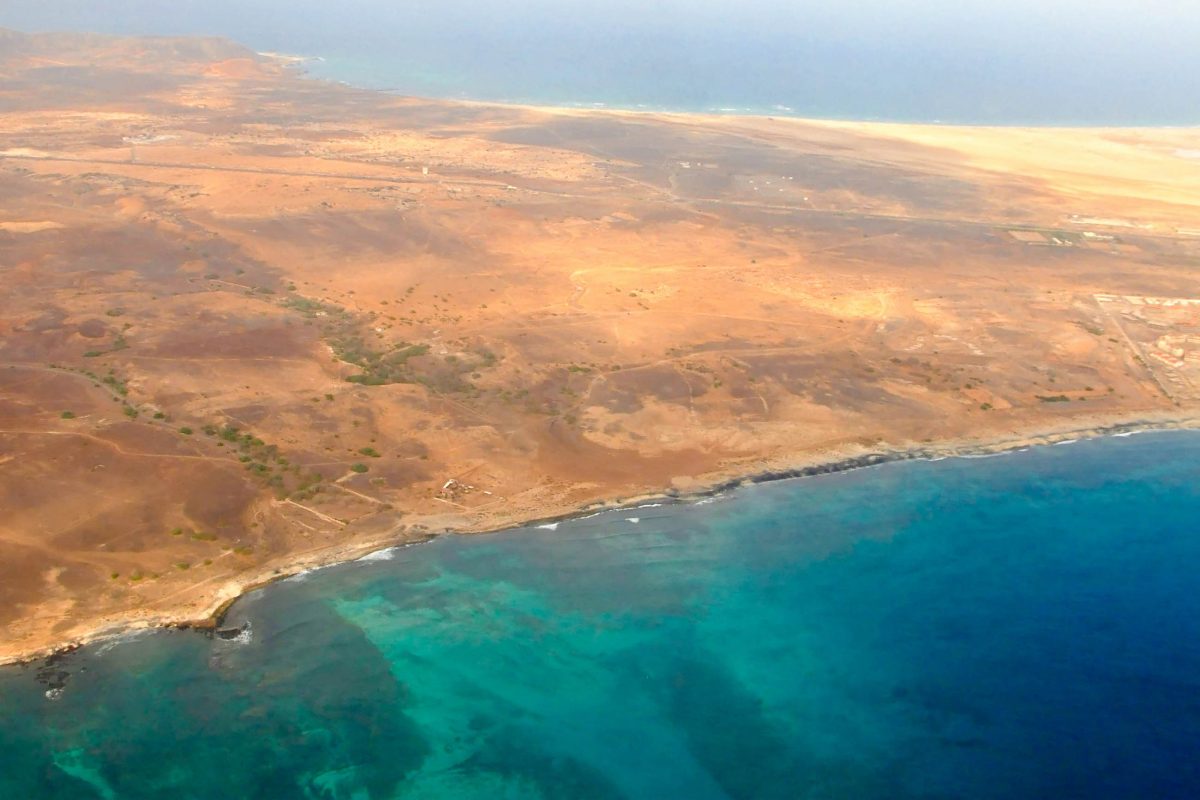
Palmeira liegt wenige Kilometer westlich von Espargos. Die wenig spektakuläre Siedlung ist mit der Meerwasserentsalzungsanlage so etwas wie die Technikzentrale der Insel und wird als Export- und Importhafen genutzt. Ein Extra-Abstecher dorthin lohnt sich nicht, denn außer das geschäftige Treiben am Hafen, einigen Bars und Restaurants gibt es wenig zu sehen.
Der Weg dorthin führt durch wüstenartige Landschaft, in der Luftspiegelungen wie in der Sahara möglich sind. Doch es fehlt die unheimliche Weite der Wüste, denn der dunkelblau glitzernde Atlantik ist nie weit entfernt.

